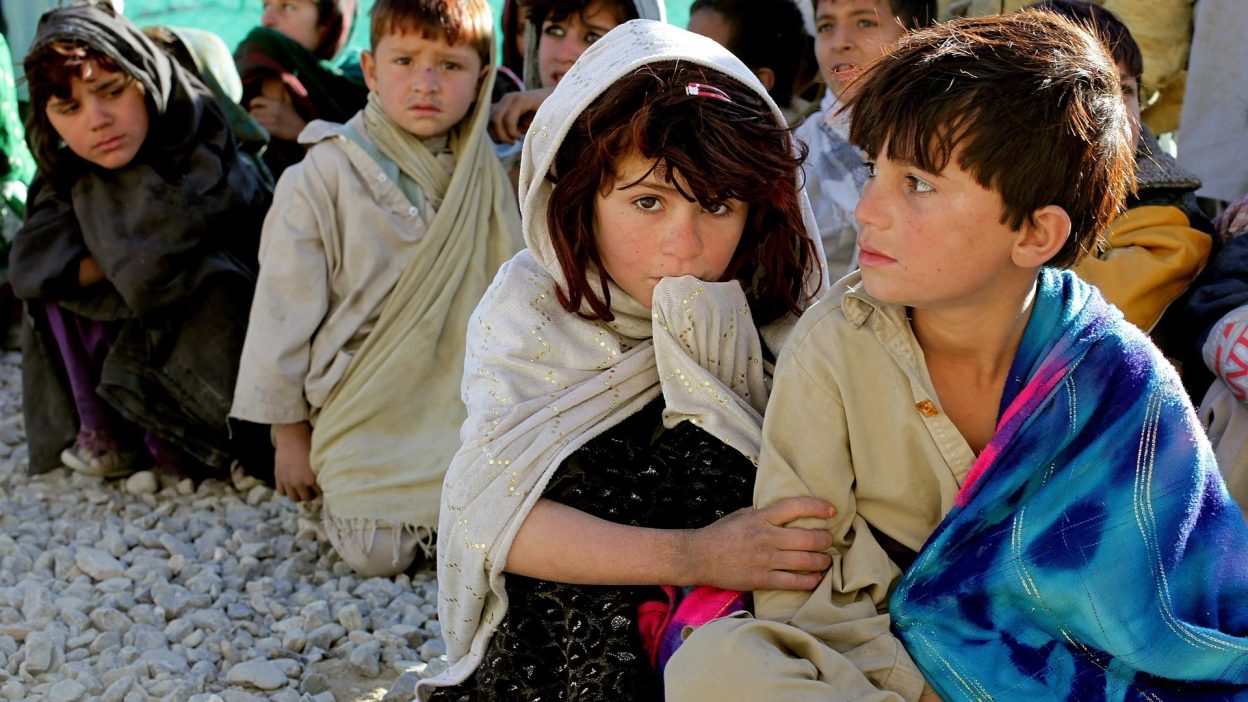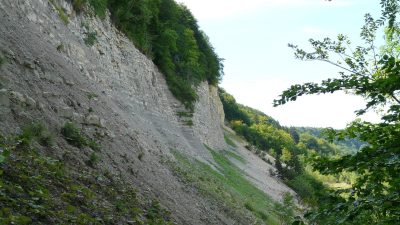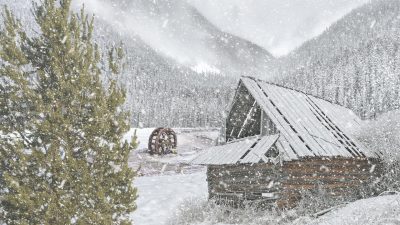A Catastrophic Storm That Exposed The Nation’s Vulnerabilities
In February 2008, Afghanistan experienced one of the deadliest and most severe blizzards in its recent history. This catastrophic weather event brought unrelenting snowstorms, avalanches, and freezing temperatures, leaving a trail of destruction across vast regions of the country. The harsh winter storm caught many by surprise, particularly in remote areas that lacked the infrastructure and emergency resources to deal with such an extreme disaster. For a country already dealing with political instability, poverty, and ongoing conflict, the blizzard proved to be a crushing blow, resulting in widespread devastation, loss of life, and economic hardship.
Afghanistan’s rugged terrain, consisting of remote villages and towering mountains, made it especially vulnerable to the effects of the blizzard. With roads blocked by deep snow, the country was largely cut off from the outside world. Communities that were already struggling with poverty found themselves unable to access basic supplies, including food, water, and medical assistance. In this context, the 2008 Afghanistan Blizzard stands out not just as a natural disaster, but as a stark example of how vulnerable populations can be made even more susceptible by poor infrastructure and lack of preparedness.
Understanding the Scale of the Disaster: Why Was the 2008 Afghanistan Blizzard So Deadly?
The 2008 Afghanistan Blizzard was an event of exceptional severity, affecting not only the lives of thousands but also the country’s already fragile infrastructure. While Afghanistan’s mountainous and remote regions are accustomed to harsh winters, the scale and intensity of this particular snowstorm exceeded all expectations.
This extreme weather event, with snow accumulating up to six feet in some regions, triggered avalanches and blocked essential routes, making rescue and relief efforts extremely difficult. The mountainous terrain, which is difficult to navigate under normal circumstances, became impassable due to the severe snowdrifts. The already limited infrastructure in these areas—such as inadequate roads and lack of effective communication systems—further exacerbated the disaster’s effects. The country’s weather forecasting capabilities were minimal, and this lack of early warning meant that many were unprepared for the catastrophic storm.
In addition to the weather-related factors, Afghanistan’s political instability during this period made coordinated disaster response almost impossible. The government, preoccupied with ongoing security issues, did not have the resources to respond to the disaster adequately. In the absence of a solid emergency management system, local communities were forced to rely on their own limited resources, and international aid agencies faced significant challenges in reaching the affected areas.
The Toll of the 2008 Afghanistan Blizzard: Deaths, Injuries, and Destruction
- Fatalities: The toll on human life was staggering, with over 900 people reported dead due to the blizzard’s combined effects. The majority of the fatalities were caused by hypothermia, avalanches, and the collapse of buildings under the weight of snow. Rural areas, which were most vulnerable, faced the brunt of the storm’s destruction. Whole families were wiped out, and the emotional toll on survivors was immeasurable.
- Injuries: Thousands of individuals were injured as a result of the blizzard. Many sustained injuries from falling debris, broken bones caused by avalanches, or frostbite due to prolonged exposure to extreme cold. Medical facilities were overwhelmed by the sheer volume of casualties, and in many cases, hospitals lacked the necessary supplies to treat those in need.
- Displacement: A large portion of the population was forced to flee their homes. With roads buried under thick snow, people were left stranded without shelter or basic supplies. Entire villages were isolated, and many survivors were forced to live in makeshift shelters while waiting for help to arrive. The humanitarian crisis deepened as the storm left people without food, clean water, and adequate medical care.
- Economic Damage: The economic damage caused by the blizzard was severe. Agriculture, a key sector in Afghanistan’s economy, was decimated as snow buried crops and destroyed livestock. The storm rendered many rural communities unable to earn a living, and food shortages ensued as agricultural production plummeted. The storm also caused widespread damage to infrastructure, further hampering the ability of the government and international aid agencies to provide relief.
Nature or Human Error? Was the 2008 Afghanistan Blizzard Exacerbated by Man-Made Factors?
While the blizzard itself was a natural disaster, the extent of its impact was undoubtedly worsened by man-made factors. Afghanistan’s geographical vulnerabilities—especially its remote and mountainous regions—meant that it was always susceptible to extreme weather conditions. However, the country’s lack of preparedness and inadequate infrastructure significantly contributed to the disaster’s devastating effects.
The absence of early warning systems and weather forecasting tools left the population unprepared for the severity of the storm. Many communities, especially in isolated rural areas, had no way of knowing that a deadly blizzard was approaching. Furthermore, the country’s political instability, with ongoing conflict and a stretched military presence, meant that disaster management systems were insufficient and underfunded. The Afghan government was unable to mobilise resources in a timely manner, and international aid efforts were hampered by logistical challenges and security concerns. This combination of natural vulnerability and human oversight made the blizzard’s impact much worse than it might have been in a more prepared nation.
Afghanistan’s Rescue Efforts: Were They Sufficient?
The response to the 2008 Afghanistan Blizzard was far from adequate, and the scale of the disaster revealed significant gaps in the country’s emergency management capabilities. Afghanistan’s poor infrastructure and the overwhelming nature of the storm meant that rescue operations were slow and often ineffective. Roads were blocked by snow, and access to affected areas was limited for days or even weeks.
Rescue teams struggled to reach isolated communities, and many victims had to endure harsh conditions for extended periods before help arrived. The lack of proper disaster management systems and inadequate resources left local communities to fend for themselves in many cases. International aid efforts were also delayed due to the logistical difficulties posed by the country’s mountainous terrain and security concerns in the region. The slow response contributed to a higher death toll and prolonged suffering for those affected by the storm.
The Human Cost: Stories of Survival and Loss
Beyond the statistics of death and destruction, the human stories that emerged from the blizzard paint an even more harrowing picture of the disaster’s impact. In some of the worst-hit areas, entire families were trapped in their homes, with no means of escaping the encroaching snow. One tragic story came from the village of Badakhshan, where a family of six became trapped in their house by snowdrifts. After days of waiting for help, only three members of the family survived. Similar stories of survival and loss emerged from across Afghanistan, where individuals were forced to make unimaginable decisions to stay alive.
While the human cost of the blizzard was devastating, it also showcased the resilience of the Afghan people. Many survivors were forced to rely on their resourcefulness and ingenuity to survive. In the absence of aid, families would melt snow to drink and use whatever materials they could find to keep warm. These personal accounts serve as a reminder of both the tragedy and the strength of the human spirit in the face of overwhelming adversity.
Political and Logistical Failures in the Blizzard’s Aftermath
The blizzard’s aftermath revealed significant political and logistical challenges that prevented timely and effective relief efforts. Afghanistan’s political instability during this time meant that the government was unable to focus adequately on disaster response, leaving a vacuum for relief efforts. The government was preoccupied with ongoing conflicts, and as a result, there was a lack of focus on emergency management.
Furthermore, the logistical challenges of reaching isolated areas severely hampered relief efforts. Roads were impassable, and the country’s infrastructure was inadequate to support the scale of the disaster. International aid agencies, though present, faced delays due to bureaucratic red tape and security concerns. The inability to quickly coordinate and deliver aid to affected communities highlighted the deficiencies in the country’s disaster management systems.
Rebuilding Afghanistan: The Long Road to Recovery
In the aftermath of the blizzard, Afghanistan faced an arduous recovery process. The destruction of homes, infrastructure, and agriculture left many families without basic means of survival. The loss of crops and livestock compounded the economic hardships faced by rural communities. Many families were displaced, and the damage to infrastructure made it difficult to rebuild.
While international aid organisations and the Afghan government worked together to provide assistance, the recovery process was slow and fraught with challenges. The country’s political instability and ongoing conflict made it difficult to establish long-term recovery plans. Despite the efforts to rebuild, many affected communities still face the consequences of the disaster years later.
Conclusion: Lessons Learned and the Need for Better Preparedness
The 2008 Afghanistan Blizzard served as a wake-up call for the country, highlighting the need for better preparedness and improved disaster response systems. The devastating effects of the storm were exacerbated by inadequate infrastructure, a lack of resources, and political instability. In the years since the blizzard, Afghanistan has made some progress in improving its disaster management systems, but the lessons of 2008 should not be forgotten.
The event underscored the importance of investing in infrastructure, early warning systems, and disaster preparedness. It also highlighted the need for better coordination between the Afghan government and international aid agencies to ensure timely and effective responses to future disasters. With the increasing frequency of extreme weather events worldwide, Afghanistan must prioritise building resilience in its communities to mitigate the impact of such disasters in the future.
FAQs About the 2008 Afghanistan Blizzard
1. How many people died in the 2008 Afghanistan Blizzard?
More than 900 people lost their lives in the blizzard due to hypothermia, avalanches, and other storm-related causes. The death toll was particularly high in rural and mountainous areas.
2. What caused the 2008 Afghanistan Blizzard?
The blizzard was caused by a combination of factors, including a massive snowstorm coupled with extreme cold temperatures, heavy snowfall, and the geographical vulnerability of Afghanistan’s mountainous regions.
3. How did the blizzard affect Afghanistan’s economy?
The blizzard caused significant economic damage, particularly in agriculture. Snow and avalanches destroyed crops, livestock, and infrastructure, leaving many rural communities without a source of income or sustenance.
4. Was Afghanistan prepared for the 2008 Blizzard?
No, Afghanistan was not adequately prepared for the blizzard. The country’s poor infrastructure, lack of early warning systems, and ongoing political instability hampered disaster response efforts.
5. How long did it take for aid to reach affected areas?
Aid arrived slowly, as many regions were cut off by snowdrifts, and rescue teams faced significant challenges in reaching affected communities. Some areas were isolated for days or weeks before receiving assistance.




